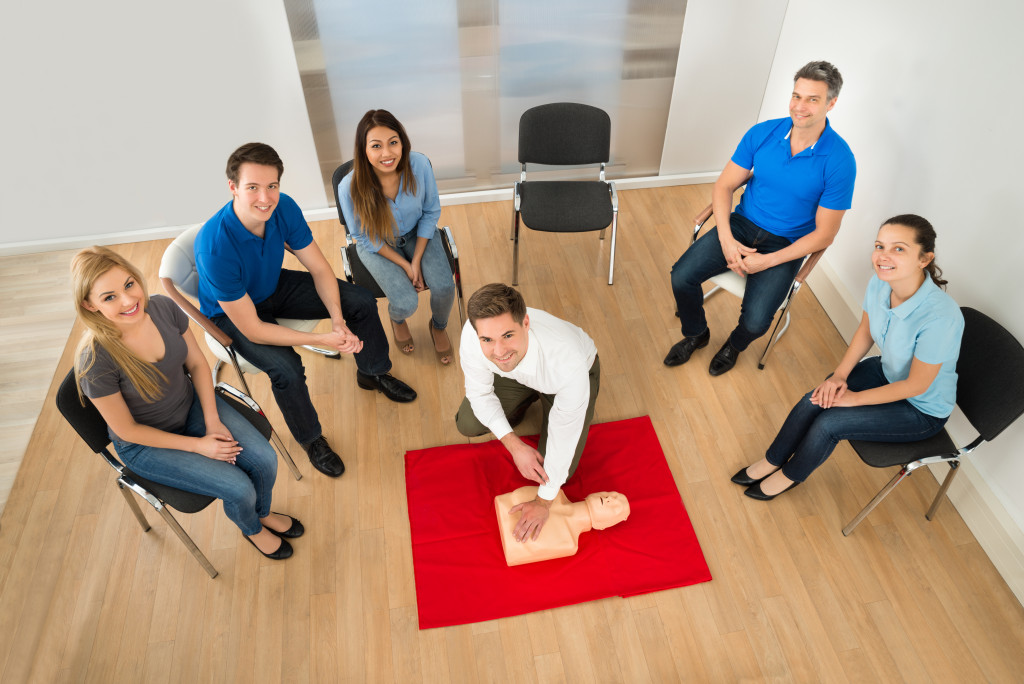- Carry out regular assessments to identify and minimize potential hazards in the workplace.
- Ensure your team has access to financial security and safety equipment to protect them in case of any unforeseen circumstances.
- Provide regular training sessions on health and safety topics, including first aid techniques and emergency procedures.
- Set up an effective communication system with emails, bulletin boards, and meetings to keep everyone informed of best practices.
Creating a safe and healthy workplace is essential for any business. Not only does it create an environment where employees feel comfortable and confident in their work, but it also ensures that your team can perform to their best capacity.
Having good practices in place is essential for a safe working environment. All employees must be aware of these practices and follow them at all times so that no one is in danger. The following are some key aspects to consider when developing good practices within your workplace:
Risk Assessments
You must carry out regular workplace risk assessments to identify potential hazards and put steps in place to minimize the risks or remove them altogether. This will help to ensure your employees’ safety and well-being. You can do so by looking at areas such as:
Workplace Layout
How is the layout of your workplace affecting employee safety? Is it set up in such a way that minimizes any risk of injury or illness? By assessing the design and making necessary changes, you can ensure your employees are safe. This could include providing ergonomic chairs, ensuring no trip hazards, and installing appropriate lighting. As such, it will lead to better workplace productivity and morale.
Financial Considerations
It is essential to ensure your team has the financial security it needs. This includes providing access to health insurance, retirement plans, and other benefits. Doing so can ensure your team is taken care of and well-protected in case of any unforeseen circumstances.
Safety Equipment
Ensure everyone has access to the necessary safety equipment. Invest in protective clothing, gloves, goggles, etc., to eliminate any potential risks associated with the job. This will also help to encourage employees to take the necessary precautions when carrying out their duties.

Training and Education
Regular training sessions on health and safety topics can help keep everyone informed of best practices and what measures to take should an accident occur. Be sure to assign someone to be responsible for delivering this training, as well as updating any relevant documents. Other areas of training must also be considered, such as:
First Aid
Ensure your team is up to date on first aid techniques and procedures. This will help in any injuries or illnesses occurring within the workplace. Providing first aid saves lives and is essential for the wellness of your team. So, invest in regular refresher courses to ensure everyone is ready for any situation.
Emergency Procedures
When it comes to emergencies such as cardiac arrest, teams must be equipped with the knowledge and skills required to deal with such issues appropriately. Advanced Cardiac Life Support (ACLS) guidelines provide workplace emergency personnel with strategies to best respond to a cardiac arrest situation. ACLS courses offer comprehensive instruction on assessing a patient experiencing cardiac arrest and how best to intervene by providing care such as chest compressions and defibrillation when appropriate. A trusted ACLS certification is invaluable for workplaces where there may be a possible risk of such occurrences, as it could save someone’s life.
Communications
Having an effective communication system in place will help you quickly disseminate any new updates or changes regarding health and safety regulations or procedures. The following are excellent ways to keep your team informed and educated on safety regulations and best practices:
E-mails
Distribute any relevant information via email to ensure everyone is kept in the loop. These are accessible from anywhere, making it a convenient way to reach people who may not always be in the office.

Bulletin Boards
Post information on bulletin boards around the workplace. It’s a great way to make sure everyone is aware of safety regulations and best practices. You can also use these boards to post upcoming meetings or training sessions.
Meetings
Organize regular meetings with your team to ensure everyone is aware of any changes or new regulations introduced. This is also a great way to keep everyone up-to-date on best practices in the workplace and ensure everyone is aware of their responsibilities.
Ultimately maintaining workforce health & well-being requires an ongoing effort from employers alike. But if done correctly, it provides immense value not only financially through reducing downtime costs associated with illness/injury claims but also emotionally through fostering greater loyalty amongst team members.

